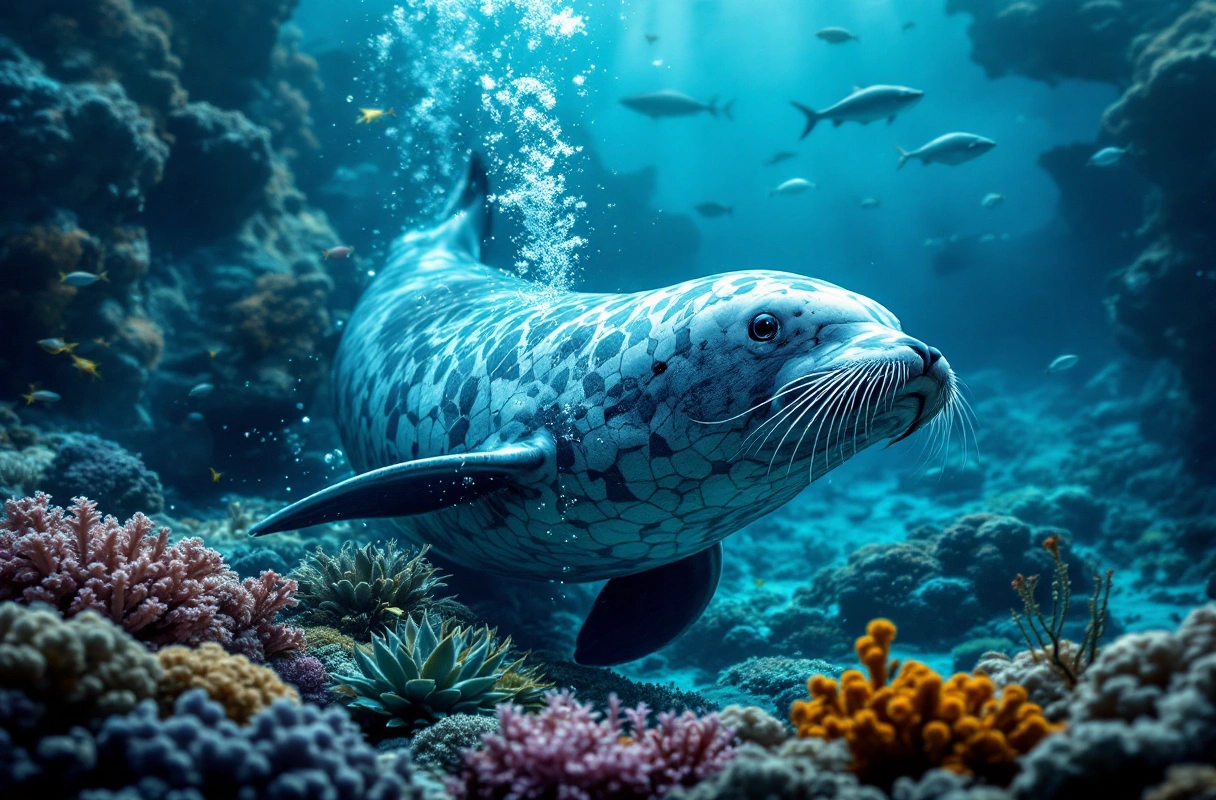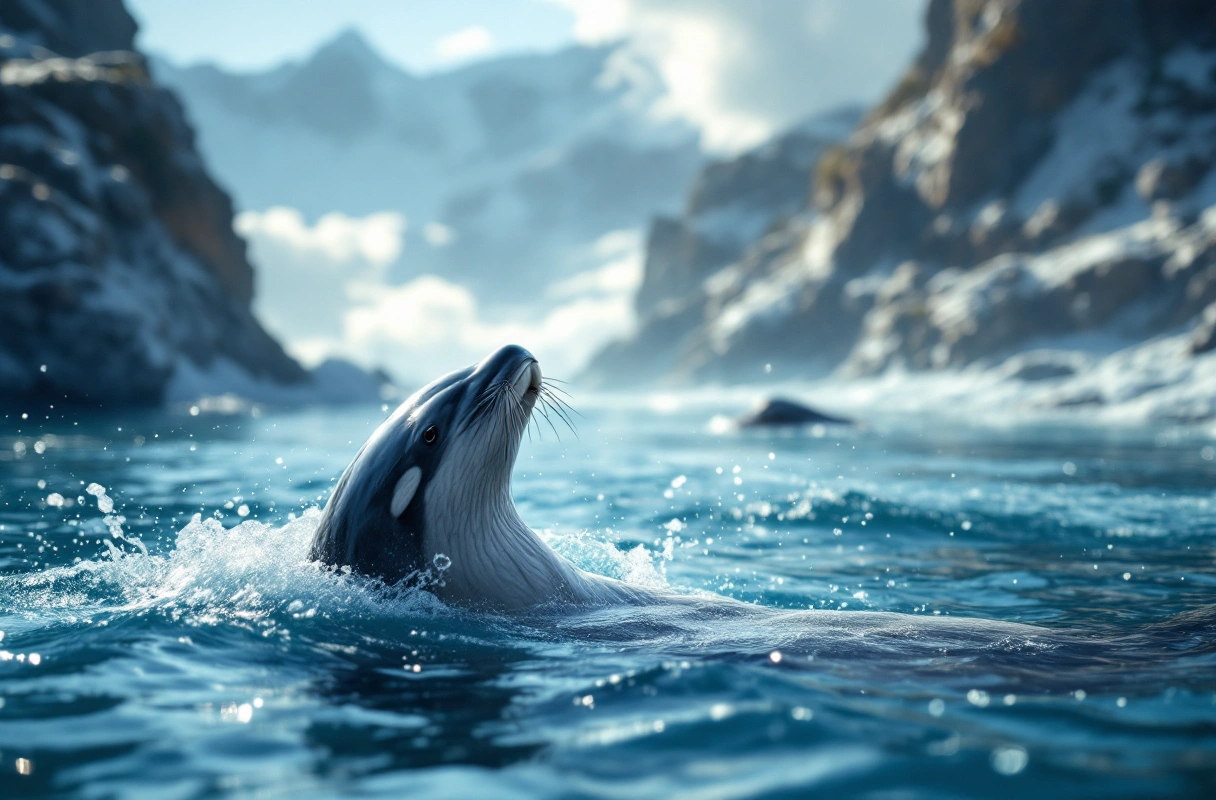
The ocean is a vast and mysterious world filled with remarkable life forms that play critical roles in maintaining the balance of underwater ecosystems. Among these life forms, marine mammals stand out not only due to their unique adaptations but also because of their significant contributions to the health of marine environments. This article delves into the fascinating realm of sea creatures, specifically marine mammals, exploring their roles, behaviors, and the importance of their conservation.

Marine mammals, which include species such as whales, dolphins, porpoises, and seals, are integral components of marine ecosystems. They serve various ecological roles that contribute to the overall health of ocean environments. Understanding these roles can help us appreciate the delicate balance of underwater ecosystems and the importance of protecting these creatures.
Marine mammals occupy various trophic levels in the ocean food web, acting as both predators and prey. For example, orcas, or killer whales, are apex predators that hunt various marine animals, including seals, fish, and even other whales. This predation helps regulate the populations of these species, preventing overpopulation and the depletion of resources.
Conversely, marine mammals also serve as prey for larger species, such as great white sharks and even humans in some cultures. This predator-prey dynamic is crucial for maintaining the balance within the ecosystem. By understanding these relationships, we can gain insights into how disturbances, such as overfishing or pollution, can lead to cascading effects throughout the marine environment.
Marine mammals contribute to nutrient cycling in the ocean. When they feed, they often consume large quantities of prey, and their waste products return essential nutrients to the water. For instance, whale feces are rich in nitrogen and phosphorus, which stimulate phytoplankton growth. Phytoplankton, in turn, forms the basis of the marine food web, supporting a diverse array of sea creatures.
Furthermore, the migration patterns of certain marine mammals, such as humpback whales, can influence the distribution of nutrients across vast oceanic regions. Their movements help transport nutrients from nutrient-rich areas to those that are less productive, enhancing overall marine productivity. This nutrient cycling is vital for the health of underwater ecosystems and the organisms that inhabit them.

Marine mammals display a remarkable diversity in size, shape, behavior, and habitat preferences. This diversity allows them to adapt to various ecological niches and thrive in different marine environments.
Cetaceans, which include whales, dolphins, and porpoises, are among the most well-known marine mammals. They are characterized by their streamlined bodies and adaptations for life in the water.
Whales are divided into two main groups: baleen whales and toothed whales. Baleen whales, such as the blue whale, filter-feed on small organisms like krill using baleen plates. In contrast, toothed whales, like the sperm whale, have teeth and hunt larger prey.
Dolphins are known for their intelligence and social behavior. They often live in pods, demonstrating complex communication and cooperative hunting strategies. Notable species include the bottlenose dolphin and the common dolphin.
Pinnipeds, which include seals, sea lions, and walruses, are characterized by their flippers and are primarily found in coastal regions.
Sirenians are herbivorous marine mammals that graze on seagrass and other aquatic vegetation. They are often referred to as "sea cows."

Despite their importance and fascinating nature, marine mammals are often misunderstood. Addressing these misconceptions is crucial for fostering a deeper understanding and appreciation of these sea creatures.
While whales and dolphins are perhaps the most recognized marine mammals, they represent just a portion of this diverse group. Marine mammals also include seals, sea lions, walruses, and manatees, each playing unique roles within their ecosystems.
While many marine mammal species face significant threats due to human activities, not all are endangered. For instance, the common bottlenose dolphin is relatively abundant in many areas. It is crucial to assess each species individually to understand their conservation status accurately.
Marine mammals are significantly affected by climate change, which impacts their habitats, food sources, and migration patterns. As ocean temperatures rise and ice habitats diminish, species like polar bears and walruses face severe challenges. Recognizing this vulnerability can motivate conservation efforts and policy changes.
Conservation efforts are essential for ensuring the survival of marine mammals and the health of underwater ecosystems. Various strategies can be implemented to protect these species and their habitats.
Marine protected areas (MPAs) are designated regions of the ocean where human activities are limited to safeguard marine biodiversity. These areas can provide critical habitats for marine mammals and other sea creatures, allowing populations to recover and thrive.
Overfishing poses a significant threat to marine mammals by depleting their food sources. Implementing sustainable fishing practices can help maintain healthy fish populations and ensure that marine mammals have adequate prey. This includes setting catch limits, using selective fishing gear, and establishing no-fishing zones in critical habitats.
Raising public awareness about the importance of marine mammals and their ecosystems is vital for garnering support for conservation efforts. Educational programs can engage communities, schools, and organizations, fostering a sense of stewardship toward marine environments.
Gaining a deeper understanding of marine mammals and their roles in underwater ecosystems can yield numerous benefits.
Understanding the intricate relationships between marine mammals and other sea creatures can promote biodiversity conservation. Protecting marine mammals can lead to healthier ecosystems, which benefits countless other marine species.
Marine mammals attract millions of tourists each year, contributing significantly to local economies. Responsible ecotourism can raise awareness about the importance of conservation and provide funding for marine protection efforts.
Education about marine mammals can inspire young people to pursue careers in marine biology, conservation, and environmental science. By fostering a passion for the ocean, we can cultivate a new generation of advocates for marine life.
As we explore the fascinating world of marine mammals and their critical roles in underwater ecosystems, organizations like the Banana Slug Club stand at the forefront of education and advocacy. The Banana Slug Club is dedicated to fostering a love for nature, science, and the environment among students, nature enthusiasts, and young learners.
By engaging with the Banana Slug Club, you can deepen your understanding of marine mammals and other sea creatures, learning about their unique adaptations and the challenges they face. The club provides a platform for exploration, education, and advocacy, encouraging young minds to appreciate the wonders of the natural world.
If you are a student, a nature enthusiast, or simply curious about the ocean and its inhabitants, consider joining the Banana Slug Club. Together, we can learn more about marine ecosystems, advocate for marine conservation, and inspire others to respect and protect our planet's incredible biodiversity.
For more information on how you can get involved, visit our website or contact us directly. Join us in our mission to educate and inspire the next generation of environmental stewards. Let's explore the wonders of the ocean together and ensure that marine mammals and other sea creatures thrive for generations to come.
Get free resources, early access to new features and updates.
No spam. Just fun educational emails!